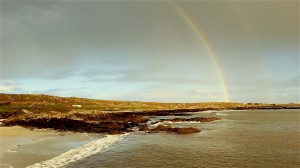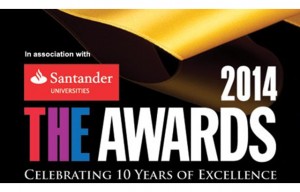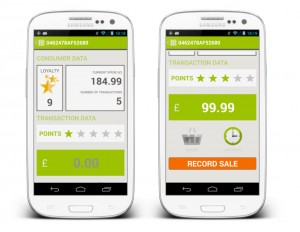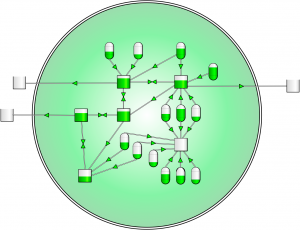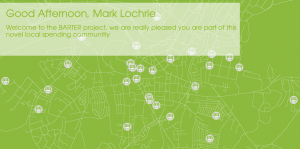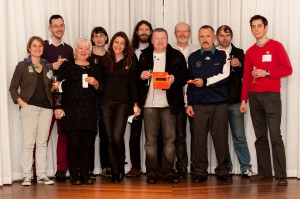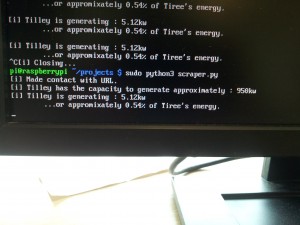The Catalyst team has been awarded a best paper award at CHI2015 for their work on the OnSupply project. CHI2015 is the world’s premiere conference on Human Factors in Computing Systems, which will be held in Seoul, Korea in April this year. A 30 sec preview video summarises our work.
What's Happening?
Most recently, the Catalyst project has been short-listed for the Times Higher Education Award, for Outstanding Contribution to the Local Community. Although we won’t find out the winner until the 27th November, we would like to take this opportunity to thank all of our community and academic partners; without your tireless work and passion, this would not have been possible.
To find out more, visit the THE Award website.
View larger: http://in.fm/v/ab?vid=A6e3Ez
Following the exciting ideas and prototypes developed in the 2nd Active Parks Workshop the team has been working hard to developing the first version of the Xylophone concept.
On Saturday the interactive xylophone went up in Ryelands Park, giving locals a chance to get a first hand experience and collect feedback on their views of its concept. The interactive xylophone was an outcome of a co-design process, based on the shared vision of “a community space with fun and activities safe for everyone to enjoy. It was well received by the local community with over 150 people interacting with it in the three hour space of the event. The feedback was amazing with several suggestions for new games and activities. The team’s favourite one was from a young person who wrote on our feedback board “I want one at home, it’s awesome!”.
The most encouraging element of the xylophone was that it invited people across ages to interact with it, having lots of fun and a good work out at the same time. It was great to see that the xylophone encouraged parents and children, grandparents and grandchildren to interact with it together, bridging in this way the generation gap and producing some interesting music in the process.
There are two ways of interacting with the xylophone. The first and most accessible way is through the use of conductive technology. The only prerequisite is that you have one of your hands positioned on the large painted hand in the xylophone, whilst you use your other hand to play any tune and test how far you can stretch. As it is based on conductive technology multiple players can engage at the same time provided there is a physical connection between them, hence facilitating connectedness.
The concept is based on following the numbers shown on the mobile phone to play ‘Twinkle Twinkle Little Star’ by touching the mobile on the mobile phone icons in the Xylophone. To play the tune you have to be very fast, move throughout the board to find the numbers, which makes it very challenging.
We gathered a number of interesting points and lessons from the brief pilot testing of the interactive Xylophone in the park on the 28th of June. Firstly it was evident that playfulness in ageless. It was great to see people across all age groups interacting together, learning from each other and having fun. There are fun ways of keeping active. It is best to encourage people to move, stretch and exercise through enjoyable multisensorial interactions that involve touch, audio and vision. These become more valuable and widely utilised when they have the aim of bridging the intergeneration gap at their core, by facilitating connectedness between people.
Lastly but certainly not least, co-designing interactions is the way forward.
Check out our video to find out more!
It has been a while since the birth of ‘Local Trade, Local Wealth’ – an ambitious project funded by Catalyst to develop a mobile system to foster local spending and help the Lancaster economy flourish. The seed funding was put toward a proof of concept, resulting in a mobile interface for recording trading data. This led to the awarding of an EPSRC Research in the Wild grant, and 18 more months of development.
In the past several months, the proof of concept has been developed into a working system, which we now call BARTER: moBile sociAl netwoRking supporTing local Ethical tRading. Trading data can now be recorded by mobile (Android) phones and BARTER’s NFC (near frequency communications) cards. We have also devised a means of allowing users to link to the BARTER system via existing cards, such as their Lancaster University Purple Card, and we have plans to link all purple cards to BARTER in the future.
The other key development has been the BARTER website, the key purpose of which is to allow users to explore the trading data collected by the system. We are currently in the process of developing a visualisation that will not only educate the Lancaster community about the flow of money around (and out of) their economy, but will also motivate them to do more of their spending locally.
One proposed visualisation is shown below, although we plan to conduct interviews and focus groups to help us determine the best way to display this information.
We are nearly done developing another visualisation that maps the connections between various traders around Lancaster, which will look something like this:
You can access the latest information and videos for BARTER at barterproject.org
We have also had some success with publications. Our first publication, presented at Academic MindTrek ’13, is available for download here.
In a forthcoming IT Professional article – to appear in the special edition on mobile commerce – we describe the concept behind the BARTER system. And in a conference paper for CHI ’14, we discuss how BARTER relates to sustainability, and why solutions such as this would benefit the cause.
We have also had a paper accepted for the CSCW 2014 workshop on Co-creating & Identity-making in CSCW: revisiting ethics in design research which explores the ethics of persuasive technology.
For more information on BARTER, visit our webpage and our Facebook page. Further details on the BARTER concept and how the system works are presented in the videos found here and here.
Shown above is a virtual “Turbine Tree” built as part of the onSupply project. It uses historical data and live output data from the Lancaster University Wind turbine to dynamically show the availability of low carbon energy on campus through the colour of its lights. The tree replays the turbine output for the previous 24 hours before showing live data:
- If the lights are green then the turbine is at full whack, ~2.5MW output.
- If the lights are red then the turbine has low output.
- If the lights are blue then the turbine is not sending data; likely it is down for maintenance.
The tree can also be seen in the iLancaster mobile app for staff and students – head to your app store to download or use online at iLancaster.lancs.ac.uk. Tree data is supplied by ISS.
Merry Christmas from all of us in the Catalyst team 🙂
On November 1st, 2013, Catalyst officially turned two years old. Like any two year old, Catalyst has seen a lot of growth in such a short time, but also has a long way to go before it is a mature adult. It still needs a lot of nurturing and careful attention paid to it by its dedicated team of parents, principally our project Manager, Debbie, and the team of research assistants, Maria Angela, Will, Stephen and Peter.
As Catalyst lead academic (or the very grand sounding Principal Investigator as we academics like to say), I thought this would be a good time to reflect on what Catalyst has achieved in its first two years. The impact of Catalyst is probably easiest to capture as a list of numbers. In two years, Catalyst has:
- Carried out 11 University-Community research projects
- Created a network of over 90 #catalystas from various Universities and community organisations
- Successfully obtained or contributed to over £600K in follow-on funding for Catalyst research projects (with another £250K currently under consideration)
- Been directly involved in, and made significant contributions to 23 public events outside of Lancaster University. Examples include Manchester Science Festival, the NHS Think-Tech Event, and Fueling Manchester.
- Made 5 Press Releases
- Published 15 academic or non-academic publications (with many more in the pipeline)
- Won 1 award (the Telling Tales of Engagement award from the EPSRC)
- Produced 13 videos, designed to bring our research results to the wider community, and all available on YouTube.
- Given 13 presentations on Catalyst, including 2 invited seminars at UC Berkeley, and at the University of Sao Paulo.
- Facilitated 1000s of conversations between members of the University and members of local, national and international communities.
Of course, the real impact of Catalyst lies not in the numbers but in the hundreds of lives that the project has touched – both positively and negatively. It would be nice to think that Catalyst has had only positive influences on people, but I am the first to admit that some people have found Catalyst difficult, or disagreed with its objectives, or gone along with the excitement only to be ultimately disappointed. On the other hand, there are countless stories of people – from both within the University and outside – who have found themselves thinking differently because of Catalyst, or found themselves able to do something they couldn’t have done by themselves. This is the real success story of Catalyst.
In the coming months, we plan to collect together many of these stories. We have already done this to some extent through our partner video company Ourus, which has produced a very nice set of videos all available on YouTube. However, there are lots more stories left to gather. We plan to commission an external assessor to independently assess the value and impact of Catalyst. And we plan to update our website content in the next 6 months to reflect concrete stories of the impact of the research. We also plan a big jamboree event in September or October of 2014 to showcase all the great things achieved so far.
In the meantime, in anticipation of all those great stories to come, I’ll leave you a quote from one of the people who has been involved in Catalyst: “The most rewarding thing was when we brought one of our service users back from Manchester… he said, ‘there is such a big world out there… I need to do something.’ To me, that summed up what we were about. It’s about opening doors to people that wouldn’t think of walking through them in normal circumstances.” (Sharon Calverley, formerly Director of Operations at Signposts Morecambe. Signposts was a partner in the first Catalyst sprint; unfortunately, since then Signposts lost its funding and was forced to close its doors.)
It seems very fitting that the very first blog post on this website should mention the first prototype iteration of the various technologies we may/may not/will use for the onSupply project.
During a previous Tiree TechWave (TTW), Rory Gianni created a simple website that monitors the current wind speed on Tiree and uses this to estimate the energy generated by the island’s wind turbine (Tilley). Although not a perfect estimation, it does give an indication of Tilley’s output.
Today, we have just hacked together a quick gadget using a Raspberry Pi, a 2 colour LED, and a web-scraping of Rory’s website. Using this LED and the Kilowatt value read from Rory’s site, the Raspberry Pi is able to visualise the (estimated) percent of the island’s power produced by Tilley. As the percentage of power generated by Tilley approaches 100%, the LED colour shifts from Red to Green, symbolising the shift from non-renewable to renewable energy being used by the island.
As Tilley is a 950Kw wind turbine, and as the energy requirement of the island is approximately the same, it is fairly trivial to provide an extremely rough estimate of Tilley’s contribution to the energy requirements of the island.
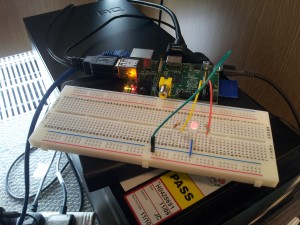
The aim of this small project isn’t necessarily on the roadmap for the final prototype output by the onSupply project, but instead was meant to give us opportunity to play around with different ways in which we can convey the energy make up supplied by the grid to the island. In fact, it is our hope that rather than being the basis of our digital contribution to the onSupply project, we hope that this can form the basis of a digital Christmas present to the island of Tiree (once it has grown up of course!)
Contact Us
Subscribe to Catalyst News!
Upcoming Events
Warning: Undefined variable $widget in /export/depts/fas/scc_research/projects/catalyst/wp-content/themes/catalysta/functions.php on line 973



